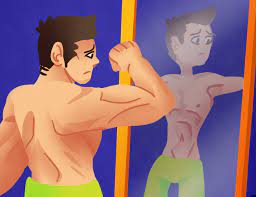The Challenge of Bodybuilding and Eating Disorders
 Bodybuilding, a sport celebrated for its emphasis on physical strength and aesthetics, often walks a fine line with eating disorders. While the pursuit of the perfect physique can be empowering, it also poses significant risks for body dysmorphia and disordered eating, especially in the highly charged atmosphere of competition. This blog delves into these challenges, highlighting both the prevalence of these issues in the bodybuilding community and strategies for prevention and recovery.
Bodybuilding, a sport celebrated for its emphasis on physical strength and aesthetics, often walks a fine line with eating disorders. While the pursuit of the perfect physique can be empowering, it also poses significant risks for body dysmorphia and disordered eating, especially in the highly charged atmosphere of competition. This blog delves into these challenges, highlighting both the prevalence of these issues in the bodybuilding community and strategies for prevention and recovery.
Bodybuilding: A High-Risk Environment for Eating Disorders
- The Pressure of Perfection: In bodybuilding, the intense focus on muscle definition and body fat levels can create an environment ripe for the development of eating disorders. The competitive nature of the sport can exacerbate this, leading to extreme dieting and exercise regimens.
- Post-Competition Vulnerability: The period following a bodybuilding competition is particularly critical. After adhering to a strict diet and exercise routine, the sudden lack of structure can lead to a pendulum swing in eating behaviors.
My Experience with Bodybuilders: Pre and Post-Competition Challenges
In my work with bodybuilding and eating disorders, both pre and post-competition, the prevalence of body dysmorphia and disordered eating is a recurring theme. The rigorous preparation for competitions often masks underlying issues, which become more pronounced once the competition ends. This phase can trigger a sense of loss and a distorted body image, as athletes grapple with their self-worth being so closely tied to their physical appearance. My role involves guiding them through these challenges, helping them develop a healthier relationship with their bodies and food. Book here for a consultation to see how I can help you
Identifying Body Dysmorphia With Bodybuilding and Eating Disorders
- Recognizing the Signs: Key indicators include an obsessive focus on perceived flaws in appearance, extreme dieting, and anxiety about weight gain or muscle loss.
- Understanding the Impact: These conditions do not just affect physical health but also lead to psychological distress, impacting overall well-being and performance.
Strategies for Prevention and Recovery
- Educating Athletes: Raising awareness about the risks of eating disorders in bodybuilding is crucial. Education should focus on healthy nutrition and the dangers of extreme dieting and exercise behaviors.
- Promoting a Balanced Approach: Encouraging a more balanced approach to bodybuilding, where health and well-being are prioritized alongside physical appearance.
- Professional Support: Seeking help from therapists, nutritionists, and coaches experienced in dealing with eating disorders in athletes.
The Role of Psychotherapy in Addressing Body Dysmorphia
Psychotherapy plays a pivotal role in treating body dysmorphia and disordered eating. Therapeutic interventions focus on:
- Addressing Underlying Issues: Helping individuals explore and resolve underlying emotional and psychological issues contributing to their condition.
- Developing Healthy Coping Mechanisms: Equipping bodybuilders with tools to manage stress, body dissatisfaction, and unhealthy eating patterns.
Fostering a Healthier Approach to Bodybuilding
The journey to a healthier approach in bodybuilding involves recognizing the risks, offering support, and promoting a culture where health is as valued as aesthetics. By understanding and addressing the challenges of body dysmorphia and disordered eating, the bodybuilding community can support its members in achieving their goals in a sustainable and healthy way.
